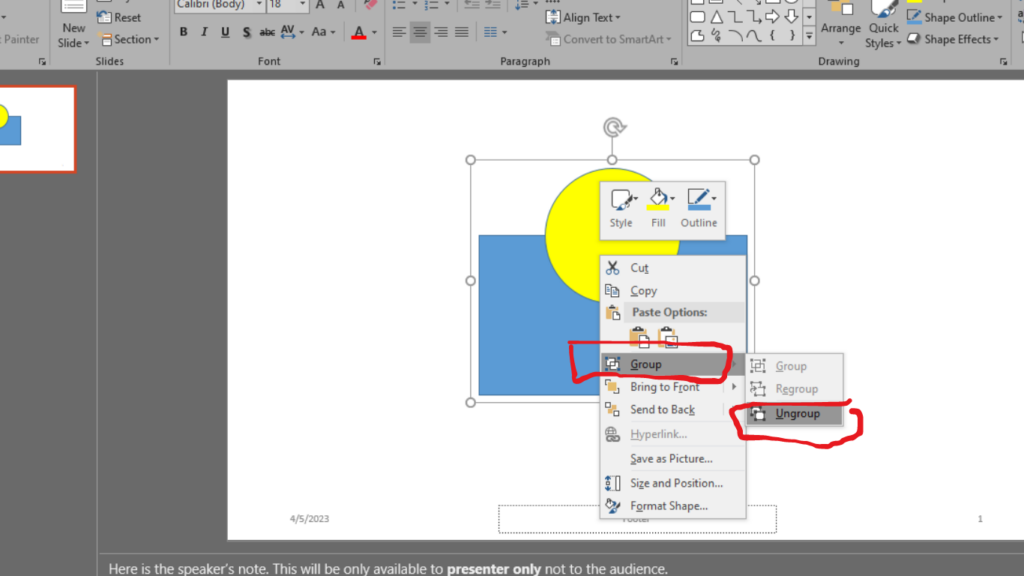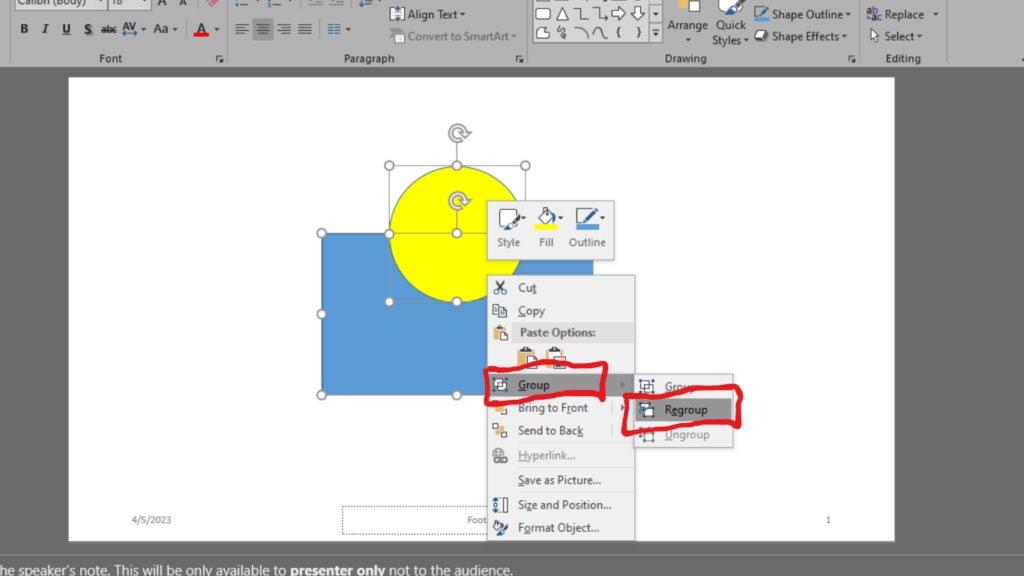PowerPoint presentations are an indispensable tool in modern-day communication. Creating presentations can be an excellent way of sharing ideas and promoting concepts.
However, the process of creating a successful presentation can be a tough nut to crack. But worry not, by using grouping, ungrouping, and regrouping features, creating a PowerPoint presentation can be a walk in the park.
In this article, I will teach you how to group, ungroup, and regroup elements in PowerPoint.
What is PowerPoint Grouping?
Grouping in PowerPoint refers to the process of combining two or more objects into a single object. Grouped objects act as one during any editing process, and it also allows you to manipulate and resize them together. The grouping function is similar to the merge function in other software.
Grouping objects can be an excellent way of forming complex objects for better clarity in a presentation.
How to Group Objects in PowerPoint?

Grouping objects in PowerPoint is pretty simple, and it can be done in a few clicks. Follow the steps below to group objects in PowerPoint:
- Firstly, select all the objects you want to group. The objects can be text boxes, shapes, pictures, clip art, or any other element.
- Once you’ve selected the objects, right-click on any of the selected objects.
- Click the “Group” option in the drop-down menu, and then select “Group” again. You can also use the shortcut “Ctrl + G” on your keyboard to group the objects.
Read Also: How to Use the Presentation Modes and the Screen Recording Features in PowerPoint
How to Ungroup Objects in PowerPoint?

Ungrouping objects in PowerPoint is essentially the opposite of grouping them. It separates the grouped objects into individual objects to allow for individual editing. Follow the instructions below to ungroup objects in PowerPoint:
- Firstly, select the group of objects you want to ungroup.
- Once you’ve selected the objects, right-click on any of the objects in the group.
- Click the “Group” option in the dropdown menu, and then select “Ungroup.” You can also use the shortcut “Ctrl + Shift + G” to ungroup objects in PowerPoint.
How to Regroup Objects in PowerPoint?

Suppose you have ungrouped the objects but wish to group them together again. Regrouping allows you to combine the ungrouped objects back into one group. Follow the instructions below to regroup objects in PowerPoint:
- Start by selecting all the objects you want to group.
- Once highlighted, right-click on any of the objects.
- Click the “Group” option in the dropdown menu, followed by the “Regroup” option. You can also use the “Ctrl + Alt + G” shortcut to regroup objects.
Read Also: How to Add, Copy and Delete Text Boxes in PowerPoint
Benefits of Grouping, Ungrouping, and Regrouping Objects in PowerPoint
Here are some benefits of using grouping, ungrouping, and regrouping features in PowerPoint:
- Improved Presentation Layouts: Grouping objects can help make presentations look more organized and professional. Objects that need to together stay together, which creates a neat and structured layout.
- Easy Formatting: Grouping objects allows you to format and customize groups easily. This can save time and effort when editing or updating presentations.
- Better Design Control: Ungrouping objects allows you to edit individual elements within a grouped object, giving you more explicit control over the design of your presentation.
- Faster Editing: Regrouping combined objects allows you to edit different elements of a slide as a single entity, making it easier to revise presentations with multiple elements.
Conclusion
Using grouping, ungrouping, and regrouping features is an essential part of creating a professional and structured PowerPoint presentation.
As I’ve mentioned before, grouping objects together in PowerPoint can give your presentation a more polished look. In addition, it makes editing and reordering objects a breeze.
Ungrouping objects can help you gain control over individual elements within a group while regrouping objects can save you time and hassle when making presentation changes.
By mastering these functions, you can create compelling PowerPoint presentations that will grab your audience’s attention, convey your message, and leave a lasting impact.
